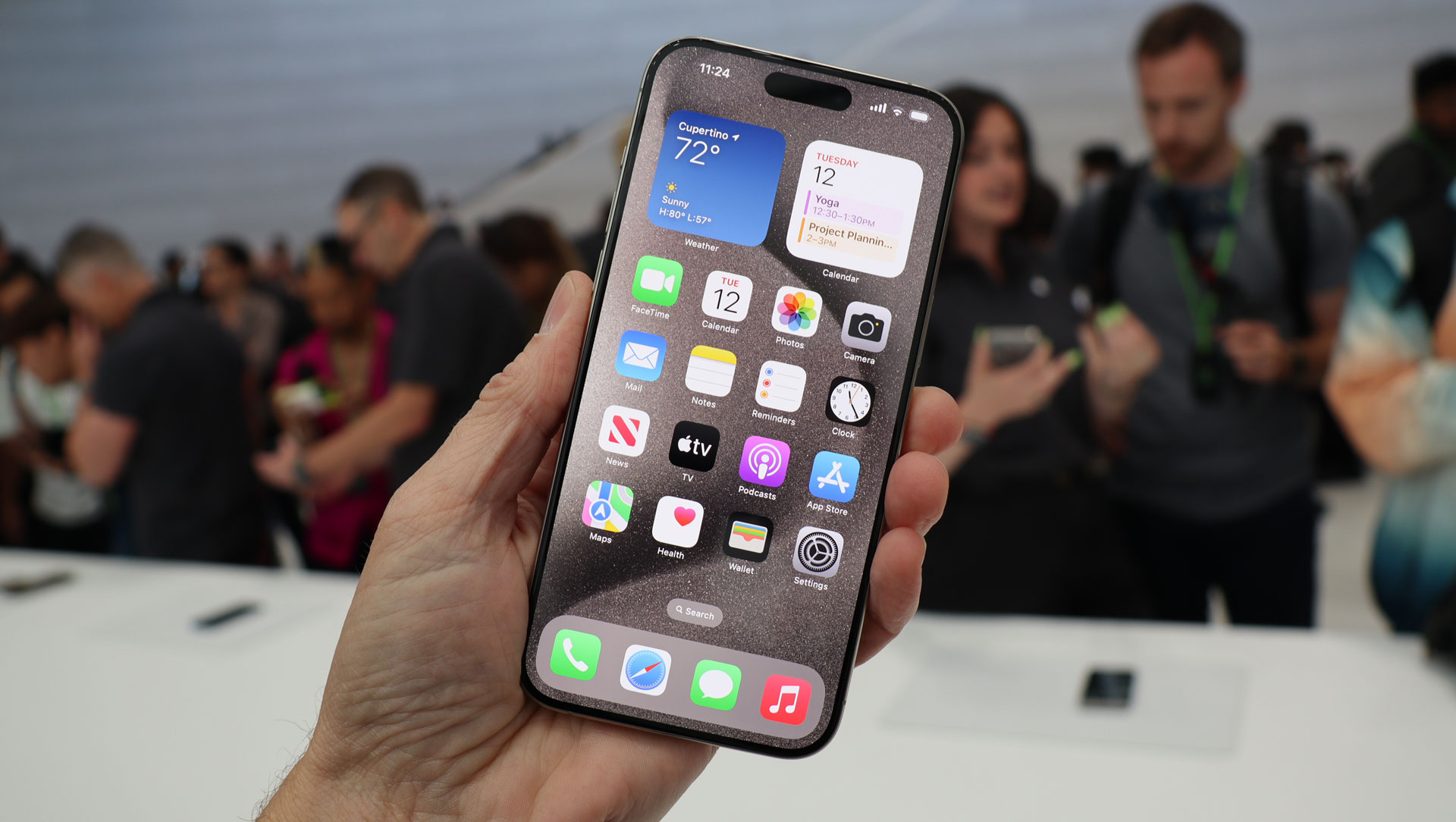
Thanks to a slew of harmonious leaks and rumors in recent weeks, we’ve now got a clear picture of what the iPhone 16 series will look like, so it’s perhaps no surprise that attention is already turning to the potential design of the iPhone 17 family.
According to display specialist and serial Apple tipster Ross Young, the iPhone 17 Plus will be noticeably smaller than the iPhone 15 Plus and iPhone 16 Plus, with Apple reportedly eyeing a new display size that sits between that of the iPhone 17 Pro and iPhone 17 Pro Max.
We’re almost certain that this year’s iPhone 16 Pro and iPhone 16 Pro Max models will be taller and narrower than their respective predecessors (the latest information suggests 6.3-inch and 6.9-inch display sizes), so this new rumor would put the iPhone 17 Plus’ display at somewhere between 6.4 inches and 6.8 inches. Given that the current Plus models measure 6.7 inches, though, we’d expect a screen size of around 6.5 inches for the iPhone 17 Plus.
Young doesn’t note why Apple could be preparing to make this change, but we suspect it has something to do with the company being keen to further differentiate its Plus-branded iPhones from its Pro-branded models. With the iPhone 16 Pro Max (and therefore the iPhone 17 Pro Max) set to boast a larger 6.9-inch display, perhaps Apple deems the current 6.7-inch iPhone 15 Plus display as too close in size to that upcoming 6.9-inch size.
6.5 inches would therefore be a nice middle ground, and would give Apple fans a fourth iPhone size to choose from (6.1 inches for the iPhone 17, 6.5 inches for the iPhone 17 Plus, 6.3 inches for the iPhone 17 Pro and 6.8 inches for the iPhone 17 Pro Max).

Historically, Apple hasn’t had much success when offering smaller screen sizes – the unpopular 5.4-inch iPhone 13 mini marked the last mini iPhone before Apple began offering Plus-sized standard models with the iPhone 14 Plus – but this new size would still ensure that the iPhone 17 Plus is larger than its standard-sized sibling. 6.5 inches is not small, by any means – it’s just markedly smaller than the 6.9-inch Pro Max.
In our book, the move to a 6.5-inch iPhone 17 Plus makes sense. Apple’s iPhone 15 Plus offers the best battery life of any iPhone available right now, but beyond that, the device still lacks an identity – it’s essentially the exact same product as the standard iPhone 15, but bigger. By giving the iPhone 17 Plus its own, exclusive display size, Apple would immediately make it a more interesting and distinguishable product.
Sign up for breaking news, reviews, opinion, top tech deals, and more.
Wait, is Apple trying to kill the Plus?

There’s another line of thinking to consider, mind. For obvious reasons, Apple would rather sell more of its most expensive iPhones than its cheaper iPhones, and the addition of a fourth screen size might actually encourage more customers – especially those who blindly believe that bigger equals better – to buy the biggest iPhone 17 model available (i.e. the iPhone 17 Pro Max).
Why? At present, the iPhone 15 Plus is just as big as the iPhone 15 Pro Max, so reducing the screen size of the iPhone 17 Plus would also reduce competition for the iPhone 17 Pro Max (therefore driving sales). In other words, a 6.5-inch screen size could make, or just as easily break, the future of Apple's Plus-branded iPhone line.
Of course, we won’t know the method behind Apple’s madness until long after these phones have launched in September next year, but it’s nonetheless exciting to hear that future iPhones could launch in never-before-seen screen sizes.
You might also like...

Axel is TechRadar's Phones Editor, reporting on everything from the latest Apple developments to newest AI breakthroughs as part of the site's Mobile Computing vertical. Having previously written for publications including Esquire and FourFourTwo, Axel is well-versed in the applications of technology beyond the desktop, and his coverage extends from general reporting and analysis to in-depth interviews and opinion.
Axel studied for a degree in English Literature at the University of Warwick before joining TechRadar in 2020, where he earned an NCTJ qualification as part of the company’s inaugural digital training scheme.